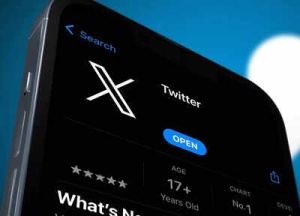India is confronting a growing diabetes crisis, often described as a silent epidemic. With nearly 10 crore people diagnosed with diabetes and an additional 13 crore living with prediabetes, regular monitoring of blood sugar has become essential—not just as medical advice, but as a daily self-care tool. Many individuals struggle to determine the most effective method to track their blood glucose levels. While home glucometers offer quick day-to-day insights, the HbA1c test provides a long-term view of average blood sugar over several months. Understanding the unique roles of these tools and how to integrate them can empower individuals to maintain better glycemic control and prevent diabetes-related complications.
What is HbA1c? Understanding levels in diabetes management
The HbA1c test, or glycated hemoglobin test, measures the average blood glucose concentration over the previous 2–3 months. Unlike daily glucose readings, it provides a “big picture” view of long-term blood sugar trends.
Clinical thresholds commonly referenced by the WHO and RSSDI include:
- <5.7% – Normal range
- 5.7%–6.4% – Prediabetes
- ≥6.5% – Indicative of diabetes (diagnosis must be confirmed by a healthcare provider)
By summarising glucose patterns over time, HbA1c offers a reliable gauge of glycemic control, allowing healthcare providers and patients to assess the effectiveness of treatment plans, dietary adjustments, or lifestyle changes.
It is particularly valuable in identifying persistent hyperglycemia that may not appear during sporadic daily readings.
What is SMBG? Real-time feedback for daily management
Self-Monitoring of Blood Glucose (SMBG) involves checking blood sugar at specific times throughout the day to understand immediate variations and patterns. Common testing scenarios include:
- Fasting blood sugar in the morning (<100 mg/dL)
- Before and after meals (80–130 mg/dL before meals; <180 mg/dL post-meal)
- Bedtime readings to ensure safe overnight glucose levels
During illness, travel, or changes in medication
- Before, during, and after exercise to prevent hypoglycemia (<70 mg/dL)
- Night-time checks (around 3 AM) to detect nocturnal dips in blood sugar
Unlike HbA1c, SMBG provides context-specific feedback, enabling patients to identify immediate highs or lows. These insights support timely interventions, such as adjusting meals, insulin doses, or physical activity, in consultation with a healthcare provider.
Why both HbA1c and SMBG are essential
While both methods measure blood sugar, they serve complementary roles:
- HbA1c gives the long-term overview of glycemic control, highlighting persistent trends and informing treatment strategies.
- SMBG offers real-time, actionable feedback to help manage daily fluctuations and prevent acute episodes of hyperglycemia or hypoglycemia.
As cited in the study published in PubMed, relying solely on HbA1c may overlook dangerous daily spikes or drops, while using SMBG alone could fail to detect chronic trends. Combining both approaches allows patients and healthcare professionals to make more informed decisions about medications, meals, physical activity, and stress management.
When to use: HbA1c vs SMBG
As study published in PubMed, this highlights the difference usage of both the blood sugar tests. Check below.
HbA1c: Typically measured every 2–3 months to assess long-term control and guide treatment adjustments.
SMBG: Used for daily monitoring, especially in individuals on insulin therapy, during lifestyle changes, or when there are changes in diet, activity, or health status.
Establishing a balanced routine with both methods ensures patients can detect both chronic patterns and short-term variations, enabling proactive management.
Overcoming barriers to SMBG
In India, some individuals hesitate to adopt SMBG due to misconceptions:
- Belief that testing is painful or inconvenient
- Thinking SMBG is only necessary for insulin users
- Assuming “feeling well” means blood sugar is controlled
Modern glucometers are fast, minimally invasive, and often smartphone-compatible. They allow users to track trends, set reminders, and easily share data with healthcare providers, making daily monitoring accessible and convenient.
Establishing a personalised monitoring routine
Healthcare providers may recommend different SMBG frequencies based on diabetes type and treatment:
- Type 2 diabetes on oral medication: Test fasting and post-lunch sugar 2–3 times per week
- Insulin therapy: Test 2–4 times daily
- Lifestyle-managed diabetes or prediabetes: HbA1c every 1–2 years, with occasional SMBG
- Even limited SMBG can reveal patterns that HbA1c alone might not capture, supporting safer and more effective diabetes management.
Complementary tools for effective diabetes control
HbA1c and SMBG work best together:
HbA1c informs long-term treatment decisions
SMBG provides actionable daily feedback
Using both methods gives patients, caregivers, and healthcare providers a comprehensive understanding of blood glucose trends. This approach can reduce the risk of complications, support timely adjustments, and empower individuals to take control of their diabetes through informed, data-driven decisions.
Also Read | Boost heart health: 13 proven lifestyle habits to reduce your risk of heart disease naturally


 Wimbledon 2025: Streaming Guide for India & US Viewers - Dates, Prize Money & New Tech
Wimbledon 2025: Streaming Guide for India & US Viewers - Dates, Prize Money & New Tech
 Greg Chappell: Rishabh Pant is Redefining Cricket with His Fearless Batting
Greg Chappell: Rishabh Pant is Redefining Cricket with His Fearless Batting
 Vijay Sethupathi Responds to Controversy Surrounding Son Surya's Film Debut 'Phoenix'; Apologizes if Anyone Was Hurt
Vijay Sethupathi Responds to Controversy Surrounding Son Surya's Film Debut 'Phoenix'; Apologizes if Anyone Was Hurt
 Smith Set for Second Test Comeback After Unique Baseball Cage Recovery
Smith Set for Second Test Comeback After Unique Baseball Cage Recovery
 Spotting Prediabetes: Key Warning Signs Your Body May Be Sending
Spotting Prediabetes: Key Warning Signs Your Body May Be Sending
 JPG to PDF: A Graphic Designer's Guide to Conversion on Desktop and Mobile
JPG to PDF: A Graphic Designer's Guide to Conversion on Desktop and Mobile
 Daren Sammy Fined for DRS Criticism After West Indies-Australia Test
Daren Sammy Fined for DRS Criticism After West Indies-Australia Test
 Google Unveils Strategy to Bolster 2024 Indian Elections: Combating Misinformation and Promoting Voter Access
Google Unveils Strategy to Bolster 2024 Indian Elections: Combating Misinformation and Promoting Voter Access
 Tiêu đề:
Oral Cancer: Know the Signs, Risk Factors, and Why Early Detection is Critical
Tiêu đề:
Oral Cancer: Know the Signs, Risk Factors, and Why Early Detection is Critical
 X Cracks Down: Half a Million Indian Accounts Suspended for Policy Breaches
X Cracks Down: Half a Million Indian Accounts Suspended for Policy Breaches